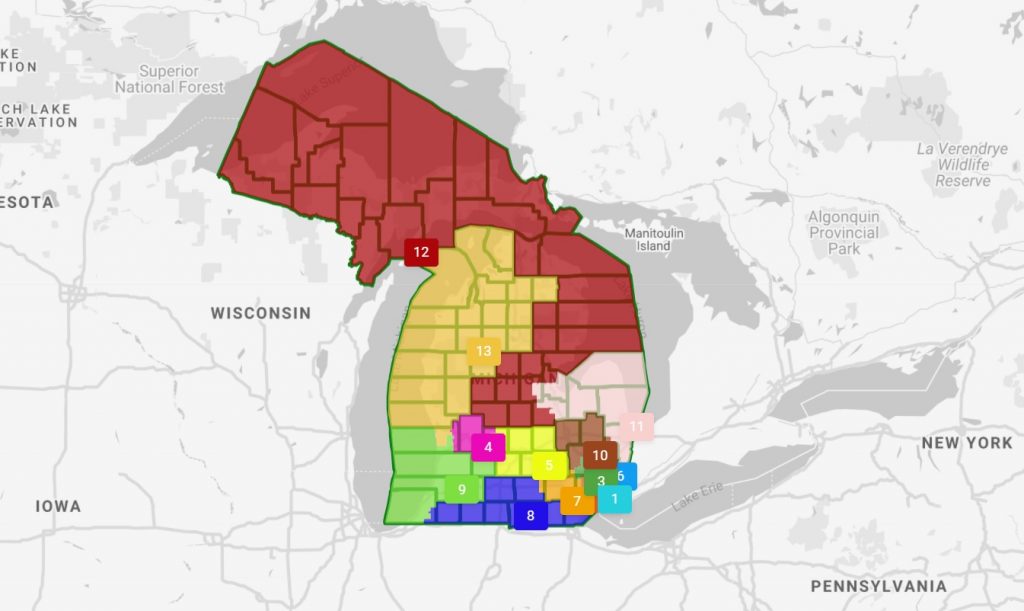Michigan’s New Redistricting Process Features Unprecedented Transparency and One “Awful Map”
Gongwer Michigan reporter Ben Solis, who has been watching the process unfold in real time, says “it’s too early to get worried” about problematic maps.

Three years after Michigan voters approved a state constitutional amendment to overhaul the process of creating political maps, the brand-new Michigan Independent Citizens Redistricting Commission is now well into the process of redrawing congressional and state legislative district lines.
“The U.S. House map is interesting, because it’s pretty radical in the fact that both Democrats and Republicans agree on one thing — that it’s an awful map that probably won’t survive.” –Ben Solis, Gongwer Michigan
We’re learning a lot about this new process, and we’re getting a glimpse at what our new maps might look like. And some of those maps are raising some eyebrows.
Listen: What we’re learning so far from the new redistricting process in Michigan.
Guest
Ben Solis is a reporter with Gongwer Michigan who has been closely covering the redistricting process. He says many of the maps drawn so far have caused a fuss because some of them would break up communities that have been drawn together in the past, some would seemingly violate requirements under the state constitution or federal law, and some maps simply don’t seem to represent the political preferences of certain areas or the state as a whole.
But Solis says a lot will change before the commission makes its final proposed maps.
“It is too early to kind of get worried about this,” he says. “We’ve seen some partisan interests try to ramp up their pressure very recently to try to influence this process. But they are guided by pretty strict constitutional criteria. And if you look at that [state constitutional] amendment that was passed [in 2018], it explains it in detail.”
Made a map that overlays @RedistrictingMI 2021 draft Senate plan (lines in red with numbers) atop the 2011 reapportionment plan (blue/grey lines and names) so people could see where sitting MI Sens would end up if this plan is proposed and adopted as is.https://t.co/S6oHbABjm2
— Ben Solis (@bensolis1) September 16, 2021
You can view the redistricting commission’s proposed draft maps and final proposals here.
Solis says one draft map in particular looks like “a fiasco.”
“The U.S. House map is interesting, because it’s pretty radical in the fact that both Democrats and Republicans agree on one thing — that it’s an awful map that probably won’t survive,” he says, noting that the current 7-7 Republican-Democratic split in Michigan’s congressional delegation could turn into a 8-5 split or even a 9-4 split favoring the GOP. But Republicans also don’t like the map, in part because it would jam three of their incumbents into a single congressional district. It also doesn’t seem to comply with the federal Voting Rights Act.
“The U.S. House map is dead on arrival,” says Solis. “They’ll likely do a lot of changes to it.”
Trusted, accurate, up-to-date.
WDET strives to make our journalism accessible to everyone. As a public media institution, we maintain our journalistic integrity through independent support from readers like you. If you value WDET as your source of news, music and conversation, please make a gift today.
